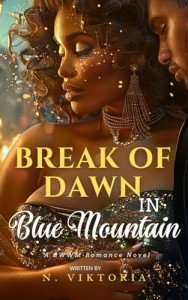The Wrong Brother Book Review - No Spoilers
Plot Summary
The Wrong Brother by Bree Wolf is a Regency-era novella marked by sharp emotional conflict and unexpected love. Isabella Carrington plans a marriage of convenience with Charles Dashwood, a man she trusts deeply. But as she whispers her “I do,” she locks eyes with Charles’s twin, Robert—who ignites a powerful, forbidden spark. Torn between loyalty and desire, Isabella finds herself confronting questions of the heart in a world that leaves no room for second chances.
Why I Love This Book
I love the raw emotional tension that unfolds in such a short span. I love how Bree Wolf captures conflict that feels real—even when love hits at the most inconvenient moment. I love Isabella’s trust in her reason, then the instant flip when Robert appears. I love that the story asks what you would do if your world shifted in a heartbeat. I love how Charles steps back, offering them a way forward—even when it means letting go. The weight of loyalty, the fight between mind and heart, and that fleeting connection—it's all written so clearly it stirs something deep.
Who Will Like This Book
If you’re drawn to Regency romances with emotional paradoxes and characters testing the limits of their vows, you’ll connect with this story. It’s for readers who find themselves swayed by “what if”—and who don’t mind heartbreak on the way to a hopeful ending. The novella’s clean tone and poignant moral tension will speak to those who value character over complexity in plot.
⚠️ Trigger warning: This book explores themes of marital loyalty, forbidden attraction, and emotional conflict that may feel intense to some readers. Please approach with awareness.
Tagged As
Regency romance, forbidden love, twins, emotional tension, mind vs heart, short read, novella, clean romance, character-driven, internal conflict, moral dilemma, heartbreak to hope, independent heroine, sweet romance, HEA, historical romance
Steam Level
This story keeps its heat subtle—leaning on stolen glances and emotional pull. The intimacy lies in what’s felt, not what’s shown, giving it a sweet rather than steamy tone.





